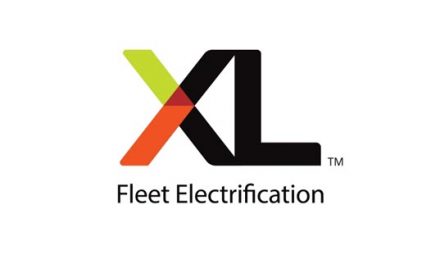Oil Market Reacts to OPEC Freeze Rumor
- Saudi suggests action to “stabilize” prices
- Saudi Arabia reports record production in July
- Global oil stocks continue to expand
- Natural gas sees support at $2.40
Sincerely, Alan Levine Chairman, Powerhouse
The Matrix
A rally in crude oil futures ran through resistance at $43 on Thursday, August 11, 2016. The market reacted to a potentially bullish comment from the Saudi oil minister about “possible action to stabilize prices.” In addition, the International Energy Agency predicted crude oil markets would tighten in the second half of 2016.
But Saudi Arabia reportedly produced 10.7 million crude oil barrels daily in July, a record. Saudi Arabia’s record output is at odds with the comments attributed to its oil minister at the June OPEC meeting where the Kingdom said it would not provide extra barrels to the market.
Higher Saudi output was not, in itself, extraordinary. It came at a time of year when Saudi demand surges to meet air conditioning needs; the increase also came at a time when global storage is filling. The U.S. reported small seasonal declines in supplies of gasoline and distillate fuel oil, but total stocks continue to grow. Data for the week ending August 5th show an increase in total stocks of 2.5 million barrels for all U.S. oils.
And the global situation is bearish as well. Product storage has grown overseas as well as in the U.S. Traditionally, product demand has been enough to balance product supply. Recently, the expansion of crude oil supply has lowered price and robust product crack spreads have encouraged refinery production.
Gasoline inventories in Europe (ARA) are reportedly up more than 17 per cent year-on-year. This works out to a near-record 8.3 million barrels. And distillate fuel oil stocks in the region stand at 23.3 million barrels. There is no reliable way to gauge Asian storage but it, too, is high. In Singapore, onshore supply is reportedly near tops and is being supplemented by floating storage. Until product stocks ease, the likelihood of a meaningful price rally is diminished.
Analysis of price patterns supports this bearish view. WTI futures are on track to retest last winter’s lows. And with gasoline about to experience the shift to winter specifications, gasoline prices could lose five to ten cents in value as September starts.
Supply/Demand Balances
Supply/demand data in the United States for the week ending August 5, 2016 were released by the Energy Information Administration.
Total commercial stocks of petroleum increased 2.5 million net barrels during the week ending August 05, 2016.
Builds were reported in stocks of K-jet fuel, residual fuel, propane, and other oils. Draws were reported in stocks of gasoline, fuel ethanol, and distillates.
Crude oil supplies in the United States increased to 523.6 million barrels, a build of 1.1 million barrels.
Crude oil supplies increased in three of the five PAD Districts. PAD District 2 (Midwest) crude oil stocks rose 1.6 million barrels, PADD 3 (Gulf Coast) stocks increased 2.5 million barrels, and PADD 4 (Rockies) stocks grew 0.1 million barrels.
Crude oil stocks in PADD 1 (East Coast) declined 0.7 million barrels and PADD 5 (West Coast) stocks fell 2.5 million barrels.
Cushing, Oklahoma inventories increased 1.2 million barrels to 65.3 million barrels.
Domestic crude oil production decreased 15,000 barrels daily to 8.445 million barrels per day.
Crude oil imports averaged 8.404 million barrels per day, a daily decrease of 334,000 barrels.
Refineries used 92.2 per cent of capacity, a decrease of 1.1 percentage points from the previous report week.
Crude oil inputs to refineries decreased 255,000 barrels daily; there were 16.597 million barrels per day of crude oil run to facilities. Gross inputs, which include blending stocks, decreased 214,000 barrels daily to 16.883 million barrels daily.
Total petroleum product inventories saw an increase of 1.4 million barrels from the previous report week.
Gasoline stocks decreased 2.8 million barrels; total stocks are 235.4 million barrels.
Demand for gasoline increased 17,000 barrels per day to 9.769 million barrels daily.
Total product demand decreased 249,000 barrels daily to 20.701 million barrels per day.
Distillate fuel oil supply decreased 2.0 million barrels; total stocks are 151.2 million barrels. National distillate demand was reported at 3.937 million barrels per day during the report week. This was a weekly decrease of 331,000 barrels daily.
Propane stocks increased 2.0 million barrels to 91.9 million barrels. Current demand is estimated at 0.854 million barrels per day, a decrease of 211,000 barrels daily from the previous report week.
Natural Gas
According to the Energy Information Administration:
Net injections into storage totaled 29 Bcf, compared with the five-year (2011-15) average net injection of 53 Bcf and last year’s net injections of 57 Bcf during the same week. Working gas stocks total 3,317 Bcf, 440 Bcf above the five-year average and 361 Bcf above last year at this time.
This week marks the 14th consecutive week that the gap of working gas stocks compared with the five-year average declined. When the refill season began on April 1, working gas stocks were 874 Bcf above the five-year average.
Source: NOAAInjections to underground storage have slowed this summer. And data for the week ending July 29, 2016 showed an unusual summertime withdrawal. Prices have retreated from their July 1st high of $2.998.
The heat of summer is moving behind us and weakness in crude oil prices affects natural gas values as well. Technical charts remain bullish but the market is clearly in a corrective phase that could sink to $2.40 before finding support on a weekly chart.
Futures trading involves significant risk and is not suitable for everyone. Transactions in securities futures, commodity and index futures and options on future markets carry a high degree of risk. The amount of initial margin is small relative to the value of the futures contract, meaning that transactions are heavily “leveraged”. A relatively small market movement will have a proportionately larger impact on the funds you have deposited or will have to deposit: this may work against you as well as for you. You may sustain a total loss of initial margin funds and any additional funds deposited with the clearing firm to maintain your position. If the market moves against your position or margin levels are increased, you may be called upon to pay substantial additional funds on short notice to maintain your position. If you fail to comply with a request for additional funds within the time prescribed, your position may be liquidated at a loss and you will be liable for any resulting deficit. Past performance may not be indicative of future results. This is not an offer to invest in any investment program.
Powerhouse is a registered affiliate of Coquest, Inc.
Was this helpful? We’d like your feedback.
Please respond to [email protected]
or call: 202 333-5380
Copyright © 2016 Powerhouse, All rights reserved.
You are receiving this e-mail as a friend of Powerhouse












